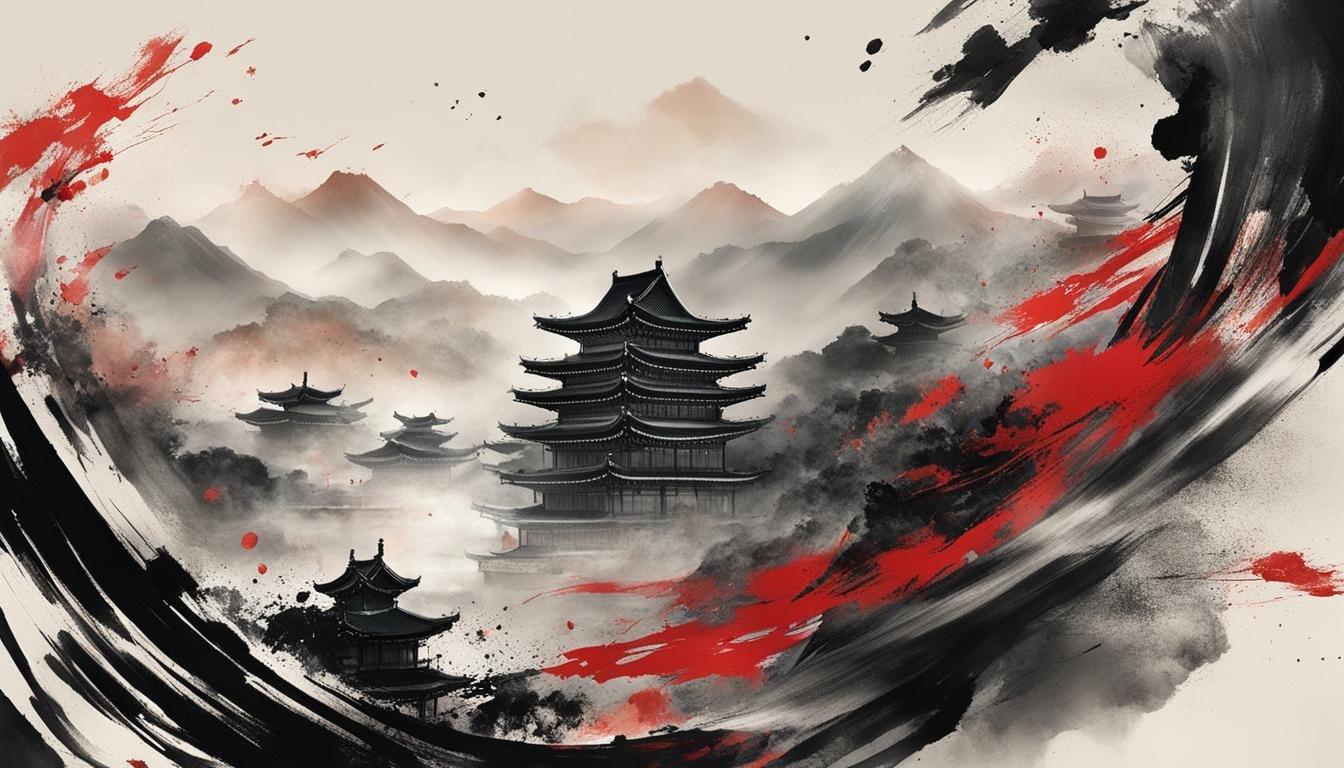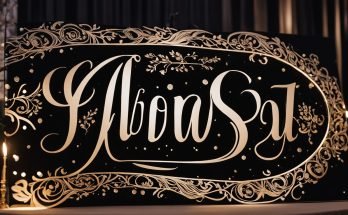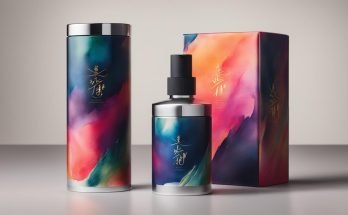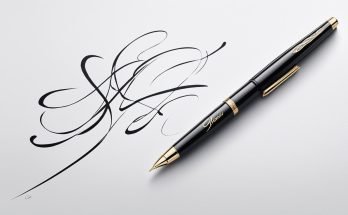Korean Calligraphy Techniques: Discover the Unparalleled Beauty of Unique Scripts!
Korean Calligraphy Techniques! Welcome to the fascinating world of Korean calligraphy! In this article, we will explore the exquisite techniques and styles that make traditional Korean calligraphy truly captivating. From ancient origins to modern adaptations, Korean calligraphy has evolved into a cherished art form that showcases the beauty of script in a unique way.
Throughout history, Korean calligraphy has been influenced by Chinese calligraphy but has developed its own distinctive styles and methods. Calligraphers have refined their brushstrokes and ink techniques to create intricate and expressive works of art. Whether you’re a lover of traditional art or interested in modern calligraphy styles, Korean calligraphy has something to offer.
Key Takeaways:
- Korean calligraphy techniques are rooted in ancient traditions but continue to evolve with modern styles.
- Traditional Korean calligraphy showcases the beauty and intricacy of script.
- Modern calligraphy styles add a contemporary twist to this cherished art form.
- Brushstrokes, ink, and paper techniques play a crucial role in creating unique and expressive calligraphy.
- Korean calligraphy is an artistic expression that holds great cultural significance.
Vocabulary on Korean Calligraphy
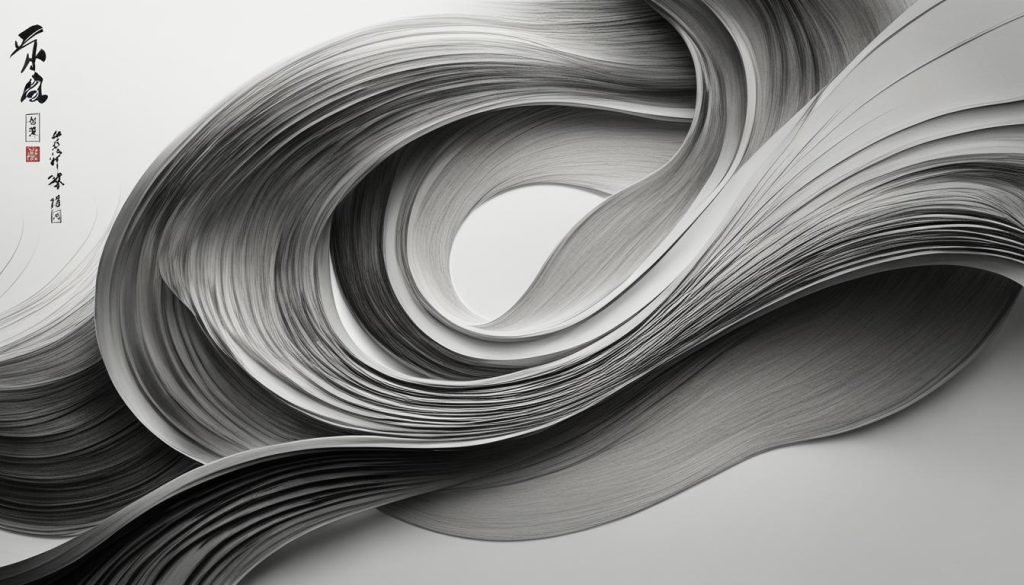
To understand the art of Korean calligraphy, it’s important to familiarize yourself with the vocabulary associated with this beautiful and intricate craft. Let’s explore some key words and phrases:
Hangeul Calligraphy
Hangeul calligraphy refers specifically to calligraphy using Korean letters. Hangeul is the unique Korean alphabet, created by King Sejong the Great in the 15th century. It is known for its simplicity and phonetic nature, making it easy to learn.
Seoye
In Korean, calligraphy is called “seoye.” This term encompasses the practice and artistry of writing beautifully with brush and ink. Seoye has deep historical roots in Korea and has been revered as a form of artistic expression for centuries.
Misul
The word “misul” translates to “art” in Korean. It is often used when referring to calligraphy as a form of artistic expression. Misul encompasses the creativity, skill, and aesthetic qualities that are inherent in Korean calligraphy.
Jeontong Yesul and Hanja
“Jeontong yesul” means “traditional art” in Korean. This term is used to describe traditional forms of Korean calligraphy that have been passed down through generations. Hanja, on the other hand, refers to Chinese characters that were previously used in Korean writing. While less common in modern Korean calligraphy, Hanja has historical significance and is sometimes incorporated into artworks.
| Vocabulary | Meaning |
|---|---|
| Hangeul Calligraphy | Calligraphy using Korean letters |
| Seoye | Korean term for calligraphy |
| Misul | Korean word for art |
| Jeontong Yesul | Traditional art |
| Hanja | Chinese characters used in Korean writing |
By understanding these terms, you’ll be better equipped to appreciate and delve into the world of Korean calligraphy. Whether you’re a beginner or a seasoned artist, learning the vocabulary will enhance your understanding and enjoyment of this ancient art form.
The Significance of Korean Calligraphy
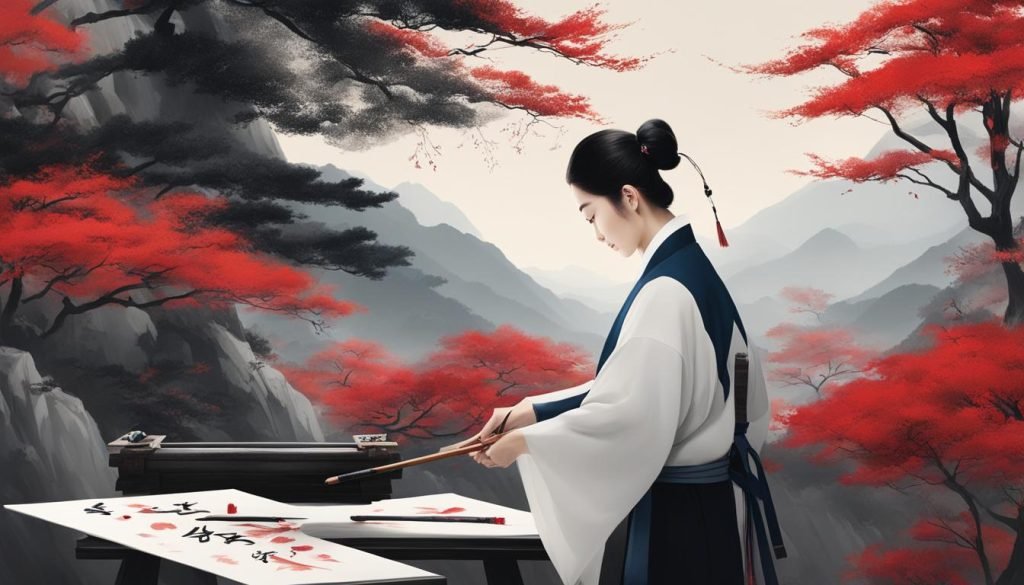
Korean calligraphy holds great significance in Korean culture. It is not just a form of writing but an art form that has been cherished and practiced for centuries. Through calligraphy, artists are able to express their emotions and convey profound messages through the strokes of their brush. The beauty of Korean calligraphy lies not only in its aesthetic appeal but also in its ability to capture the essence of the Hangeul alphabet, showcasing the artistic qualities of Korean letters and characters.
Calligraphy is considered as a form of artistic expression in Korea. It allows calligraphers to display their creativity and skill, as they carefully craft each stroke and create a harmonious composition. The use of different brush techniques, such as thick and thin strokes, adds depth and texture to the artwork, enhancing its visual impact. Calligraphy in Korea is often combined with other forms of art, such as painting, to create truly unique and captivating pieces.
The Hangeul alphabet further enhances the significance of Korean calligraphy. Developed in the 15th century by King Sejong the Great, the Hangeul alphabet is known for its scientific design and phonetic sound system. Calligraphy using the Hangeul alphabet not only showcases the beauty of the script but also serves as a testament to the cultural and linguistic heritage of Korea. It is a visual representation of the nation’s identity and a reflection of its rich history.
Table: Korean Calligraphy Styles and Meanings
| Style | Meaning |
|---|---|
| Chosun | Traditional style characterized by strong brushstrokes and bold compositions |
| Gongmyeong | Style influenced by Chinese calligraphy, known for its elegant and refined strokes |
| Haengseo | Style that focuses on the rhythm and flow of the brush, creating a sense of harmony |
| Hyehwae | Style that emphasizes freeform brushstrokes and expressive energy |
Korean calligraphy carries a deep cultural significance in Korea. It represents the artistic expression of the Korean people, showcasing their creativity, heritage, and identity. Whether you are an admirer of art or simply curious about Korean culture, exploring the world of Korean calligraphy will open your eyes to the beauty and complexity of this ancient art form.
The History of Korean Calligraphy
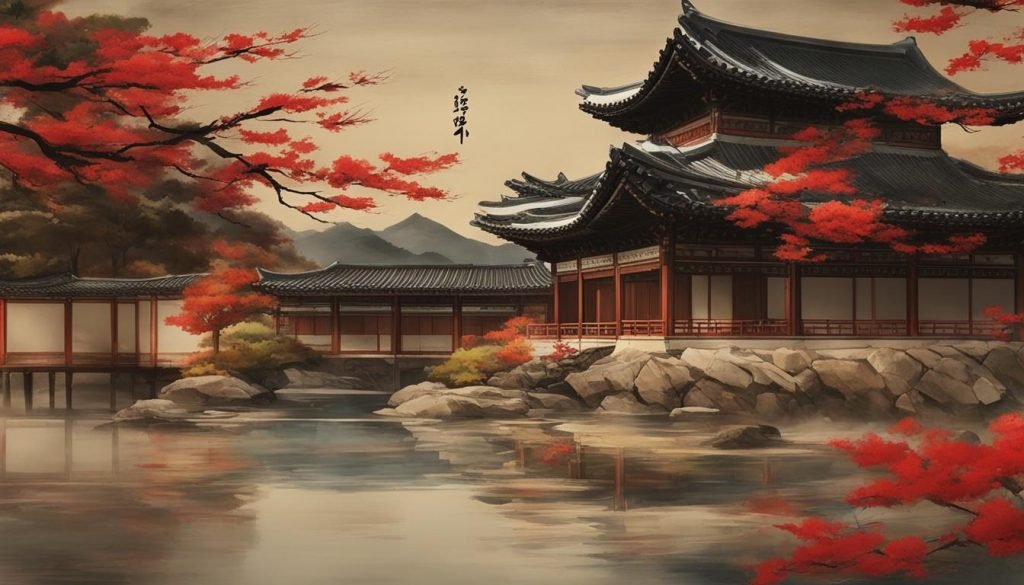
Korean calligraphy has a rich and fascinating history that spans centuries. It originated from Chinese calligraphy but developed its own unique style in Korea. One of the significant periods in the history of Korean calligraphy is the Unified Silla dynasty, which lasted from 668 to 935 AD. During this era, calligraphy flourished, and many talented calligraphers emerged, including Kim Chong Hui.
Kim Chong Hui was a renowned calligrapher known for his ch’usa style, which became popular during the Joseon period. His calligraphy showcased intricate brushwork and elegance, influencing subsequent generations of calligraphers. The Joseon period saw significant advancements in Korean calligraphy, with calligraphers exploring new techniques and styles.
Over the years, Korean calligraphy has adapted to changes in writing systems and cultural influences. It has continued to evolve, incorporating modern elements while maintaining its traditional essence. Today, Korean calligraphy is appreciated for its artistic and cultural value, serving as a testament to Korea’s rich heritage and the creativity of its calligraphers.
| Calligrapher | Period | Style |
|---|---|---|
| Kim Chong Hui | Unified Silla dynasty | Ch’usa style |
| Choi Ch’i-wŏn | Goryeo dynasty | Heungcheong style |
| Pak Noja | Joseon dynasty | Tapa style |
Table: Notable calligraphers who made significant contributions to the development of Korean calligraphy.
The Four Basic Tools of Korean Calligraphy
Korean calligraphy relies on four essential tools that are integral to the art form. These tools, which have been used for centuries, play a crucial role in creating the beautiful brushwork and intricate designs that define Korean calligraphy. Understanding these tools is key to appreciating the craftsmanship and skill behind each piece.
Brush
The brush, known as “yangbalm,” is the primary tool used in Korean calligraphy. It is typically made with animal hair, such as goat hair, and has a bamboo handle that provides stability and control. The brush allows the calligrapher to manipulate the flow of ink and create various brushstrokes, such as thick and thin lines, adding depth and dimension to the characters.
Ink Stick and Ink Stone
The ink stick, or “mohyon,” is made from the soot of pine trees and other natural materials. It is ground on an ink stone, or “moktak,” with a few drops of water to produce ink for writing. The calligrapher adjusts the consistency and intensity of the ink by varying the amount of water added. The ink stone, often made of polished stone, serves as a container for the ink and provides a smooth surface for grinding the ink stick.
Hanji Paper
Hanji paper, also known as “jangji,” is a traditional Korean paper made from the bark of mulberry trees. It is highly regarded for its durability and ability to hold ink without bleeding. The porous nature of hanji paper allows the brushstrokes to glide smoothly across the surface, resulting in crisp and precise characters. The paper’s texture and thickness can vary, offering different options for calligraphers to achieve various effects in their work.
These four tools—brush, ink stick, ink stone, and hanji paper—are the foundation of Korean calligraphy. They provide the necessary materials and instruments for calligraphers to create stunning works of art that showcase the beauty and intricacy of the Korean script. With these tools in hand, calligraphers can express their creativity and convey their emotions through the graceful strokes of their brush.
Learning Korean Calligraphy
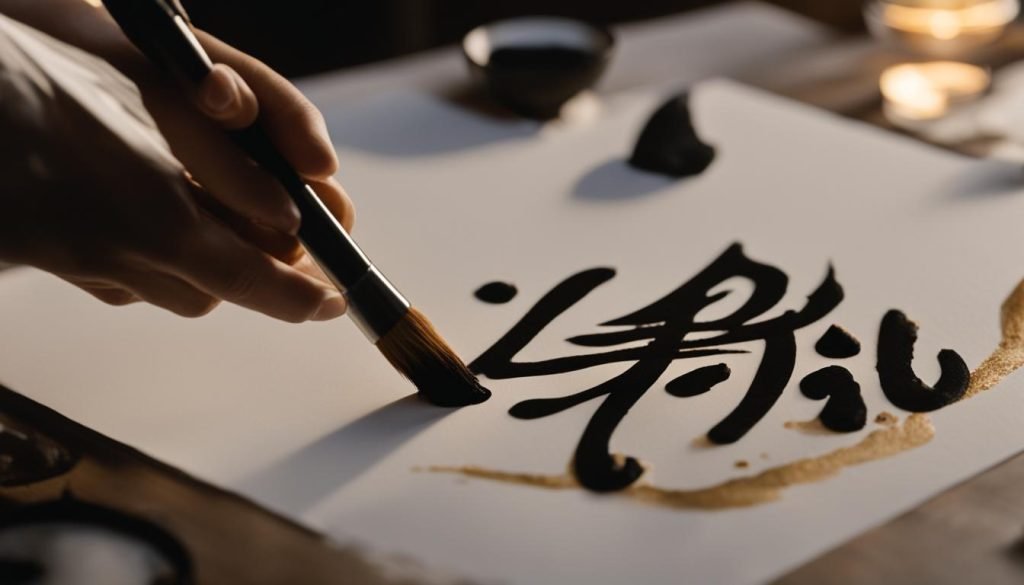
If you have a fascination for the art of Korean calligraphy and want to learn this traditional craft, there are various options available for you. Enrolling in calligraphy classes is a great way to gain hands-on experience and learn from skilled instructors who can guide you through the techniques and principles of Korean calligraphy.
One popular destination for calligraphy enthusiasts is Namsan Hanok Village, located in Chonghak-dong. This historic village provides a unique setting to immerse yourself in traditional Korean culture while learning calligraphy. In addition to calligraphy classes, you can also explore other cultural activities such as traditional music and poetry classes, further enriching your understanding of Korean arts.
Learning Korean calligraphy not only allows you to develop a new skill but also provides an opportunity to appreciate the rich cultural heritage of Korea. So why not embark on this journey of artistic self-expression and sign up for calligraphy classes to discover the beauty of Korean calligraphy firsthand?
Calligraphy in Korean Culture Today
Modern Korean calligraphy has embraced new artistic styles while retaining its traditional roots. One prominent form of calligraphy is Hangeul calligraphy, which focuses on writing Korean letters with grace and simplicity. This style has gained popularity for its elegant and restrained beauty, capturing the essence of the Hangeul alphabet.
In contemporary Korean calligraphy, calligraphers are constantly experimenting with new fonts and artistic writing styles. They push the boundaries of this ancient tradition, bringing forth innovative techniques and expressions. This creativity and exploration have helped Korean calligraphy remain relevant in modern times, captivating both traditionalists and those seeking a fresh take on the art form.
“The beauty of Korean calligraphy lies in its ability to evoke deep emotions through the brushstrokes and the chosen words.”
Korean calligraphy continues to be an important part of Korean culture, appreciated for its aesthetic and cultural value. It is often displayed in galleries, exhibitions, and cultural events, serving as a visual representation of the country’s rich heritage. The art form’s ability to capture the beauty of language and evoke emotions through carefully crafted brushstrokes makes it a cherished aspect of Korean artistic expression.
Through the exploration of new artistic styles and the preservation of traditional techniques, Korean calligraphy remains a timeless art form that continues to inspire and captivate audiences around the world.
Exploring Korean Calligraphy Techniques
When it comes to Korean calligraphy, the techniques used play a crucial role in creating beautiful and expressive artworks. From brush strokes to ink and paper techniques, each element contributes to the overall aesthetic. Let’s delve into the key techniques that make Korean calligraphy so unique and captivating.
Brush Strokes
The brush strokes in Korean calligraphy are carefully crafted to convey the artist’s emotions and intentions. With varying thickness and speed, these strokes create textures and expressions that bring the characters to life. From bold and powerful strokes to delicate and graceful ones, the brush becomes an extension of the artist’s hand, giving each piece a distinct personality.
Ink and Paper Techniques
The choice of ink and paper greatly influences the final appearance of a Korean calligraphy artwork. Traditional Korean calligraphy uses hanji paper, made from mulberry trees, which has a unique texture that absorbs ink beautifully. The type of ink used, often made from pine soot, can be adjusted to achieve different shades and effects. The combination of ink and paper allows the calligrapher to create depth, contrast, and rhythm in their work.
Seokbat: Stone Rubbings
Seokbat, or stone rubbings, is a technique commonly used in Korean calligraphy. This technique involves placing a piece of thin paper on top of an engraved stone surface and rubbing it with a brush. The pressure applied during the rubbing process transfers the texture and details of the stone onto the paper, resulting in unique patterns and motifs. Seokbat adds an additional layer of complexity and visual interest to the calligraphy artwork.
By mastering these techniques, Korean calligraphers are able to create stunning pieces of art that not only showcase their technical skill but also convey profound meaning and emotion. The brush strokes, ink and paper techniques, and the use of Seokbat all contribute to the beauty and uniqueness of Korean calligraphy.
| Korean Calligraphy Techniques | Description |
|---|---|
| Brush Strokes | Varied thickness and speed create unique textures and expressions. |
| Ink and Paper Techniques | Choice of hanji paper and pine soot ink influences the final result, creating depth and contrast. |
| Seokbat: Stone Rubbings | Transfers the texture and details of engraved stones onto paper, adding complexity to the artwork. |
Notable Korean Calligraphy Artists
Throughout history, Korea has produced many talented calligraphy artists who have left a lasting impact on the art form. Two notable Korean calligraphy artists are Kim Saing and Choi Ch’i-wŏn. These master calligraphers have made significant contributions to the development and preservation of Korean calligraphy.
Kim Saing was a renowned calligrapher during the Joseon period. He excelled in various calligraphy styles, including the traditional ch’usa style and the more expressive and dynamic idu style. Kim Saing’s works showcase his exceptional brush control and artistic flair, capturing the essence of Korean calligraphy.
Choi Ch’i-wŏn, also known as Hansaek, was a prominent calligrapher during the Goryeo period. He was greatly influenced by Chinese calligraphy and developed his unique style that combined elements of both Korean and Chinese scripts. Choi Ch’i-wŏn’s calligraphy was characterized by its bold, powerful brushstrokes and intricate compositions.
Exploring the works of these artists not only allows us to appreciate their technical skill and artistic expression but also provides valuable insights into the cultural and historical context of Korean calligraphy. Their masterpieces continue to inspire and influence contemporary calligraphers, ensuring that Korean calligraphy remains a cherished art form in Korea and beyond.
Table: Notable Korean Calligraphy Artists
| Artist | Period | Styles |
|---|---|---|
| Kim Saing | Joseon | Ch’usa, idu |
| Choi Ch’i-wŏn | Goryeo | Korean-Chinese fusion |
Both Kim Saing and Choi Ch’i-wŏn left a lasting legacy in the world of Korean calligraphy, elevating the art form with their exceptional skills and creativity. Their works serve as a testament to the beauty and cultural significance of Korean calligraphy, inspiring future generations of calligraphers to delve into this ancient tradition and create their own masterpieces.
The Beauty of Korean Calligraphy
Immerse yourself in the exquisite world of Korean calligraphy and discover the captivating beauty of this ancient art form. With its script elegance and artistic expression, Korean calligraphy truly stands out as a testament to the creativity and skill of the calligraphers who dedicate themselves to its practice.
Each stroke of the brush in Korean calligraphy is meticulously crafted, creating a visual symphony of delicate lines and curves. The precision and control exhibited by the calligraphers are awe-inspiring, resulting in pieces of artwork that exude grace and sophistication. The script itself possesses a timeless beauty, showcasing the rich heritage and cultural significance of Korea.
From traditional styles that have been passed down through generations to modern interpretations that push the boundaries of artistic expression, Korean calligraphy continues to captivate and inspire. It serves as a powerful medium for calligraphers to convey their emotions and thoughts, allowing for a deeper connection between the artist and the viewer.
Whether you are a calligraphy enthusiast or simply appreciate the aesthetic appeal of this traditional art form, Korean calligraphy offers a unique and immersive experience. It invites you to explore the rich heritage of Korea and to marvel at the intricate beauty created through the combination of brush, ink, and paper. Let yourself be enchanted by the beauty of Korean calligraphy and embark on a journey of artistic exploration.
Conclusion
Korean calligraphy is a traditional art form that holds immense cultural significance. It beautifully combines technical skill with artistic expression, resulting in captivating pieces of artwork. The elegance of the script, the precision of the brushstrokes, and the depth of emotion conveyed in each piece exemplify the mastery of this ancient art form.
As a traditional art form, Korean calligraphy has deep roots in Korean culture. It serves as a visual representation of the country’s rich heritage and showcases the artistic talent and creativity of Korean calligraphers. Each stroke is meticulously crafted, reflecting the unique beauty and wisdom found within Korean characters.
Exploring Korean calligraphy allows you to immerse yourself in a world of beauty, tradition, and cultural significance. By appreciating this art form, you not only gain a deeper understanding of Korean culture but also connect with the centuries-old traditions that have shaped it. So, embrace the elegance and grace of Korean calligraphy and discover for yourself the timeless appeal of this traditional art form.
FAQ – Korean Calligraphy Techniques
What is Korean calligraphy?
Korean calligraphy, known as “seoye,” is an ancient art form that originated from Chinese calligraphy and has become a cherished tradition in Korea.
What are some important terms associated with Korean calligraphy?
Some important terms include “seoye” (calligraphy), “Hangeul calligraphy” (calligraphy using Korean letters), “misul” (art), “jeontong yesul” (traditional art), and “Hanja” (Chinese characters).
Why is Korean calligraphy significant in Korean culture?
Korean calligraphy serves as a means of artistic expression, highlighting the beauty of the Hangeul alphabet and showcasing the artistic qualities of Korean letters and characters. It is also often combined with other forms of art, such as painting, to create a harmonious composition.
What is the history of Korean calligraphy?
Korean calligraphy has a rich history that dates back to ancient times. It was influenced by Chinese calligraphy and developed its own unique style in Korea. Notable calligraphers like Kim Chong Hui emerged during the Unified Silla dynasty, and Korean calligraphy continued to evolve over the years, adapting to changes in writing systems and cultural influences.
What are the four basic tools of Korean calligraphy?
The four basic tools of Korean calligraphy are paper, brush, ink stick, and ink stone. Traditional Korean calligraphy requires hanji paper, a brush made with animal hair, an ink stick made from soot of pine trees, and an ink stone to grind the ink.
How can I learn Korean calligraphy?
If you are interested in learning Korean calligraphy, you can take calligraphy classes in Korea or explore opportunities offered by foreign embassies. Namsan Hanok Village is a popular destination for calligraphy enthusiasts, offering traditional Korean culture immersion and calligraphy classes.
How has Korean calligraphy evolved in modern times?
Korean calligraphy continues to evolve and adapt to contemporary artistic trends. Hangeul calligraphy has gained popularity for its simplicity and restrained beauty. Calligraphers are constantly experimenting with new fonts and artistic writing styles, pushing the boundaries of this ancient tradition.
What techniques are used in Korean calligraphy?
Korean calligraphy techniques encompass a range of skills and practices. The brush strokes used vary in thickness and speed, creating unique textures and expressions. Ink and paper techniques are crucial, and the type of paper used can greatly impact the final result. Seokbat, or stone rubbings, is another technique commonly used, adding depth and complexity to the artwork.
Who are some notable Korean calligraphy artists?
Kim Saing and Choi Ch’i-wŏn are considered masters of Korean calligraphy, known for their mastery of Chinese calligraphy styles and their unique contributions to the art form.
What is the beauty of Korean calligraphy?
Korean calligraphy is captivating due to its elegant script, precise brushstrokes, and artistic expression showcased in each piece. It captures the essence of Korean culture and serves as a visual representation of the country’s rich heritage.

